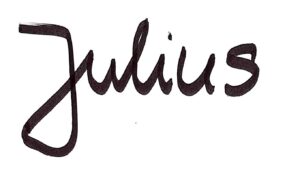This is the first article to be included in the new Alive School (www.alive.berlin) newsletter. For this, I wanted to write about something meaningful to me and to embodied leadership in general. ‘Breathing is the gateway to everything,’ one of my trainers and mentors used to say. I believe he was right! Aliveness and life itself would not be possible without breathing. Breathing affects our mental and physical health in the same way. In my article, I will write about my own journey with breathwork and explore its positive health benefits. Finally, I will apply it to leadership and describe an everyday breathing technique.
My own journey with breathwork
For many years, I have learned that it is better for me to hold back my emotions and impulses for numerous reasons. What may have been true in my childhood turned out to be dysfunctional when I became an adult. Not in general, though – in many everyday social situations, not showing our authentic self is highly rewarded. However, in order to truly come alive, expressing my emotions and turning them into meaningful action, it is essential. The key to this is our breath. While I will describe the ‘mechanism’ of breathing in the next paragraph, here I would rather focus on my own journey. My own breakthrough came in a self-development group that I was part of for two years. The facilitator guided us through deep breathwork sessions – specifically neo-reichian breathing and quantum light breath – every time we met. Using my full breathing capacity opened up a whole new world for me. It was less about the outcome of each individual event and more about the implicit understanding that I hadn’t reached my full potential in life – a hidden power that I had become aware of and which could take my sense of vitality to new levels. Over the following years, I deepened my understanding of breathing during my Bioenergetics training. Based on my recent experiences with the Wim Hof Method and other breathing techniques, I have established a weekly deep breathing routine. I still regularly experience the power of breathing when I find myself in states of anxiety and uncertainty. Breathwork helps me tremendously in those moments, bringing me back to a state of aliveness that connects me with the present moment and helps me find creative solutions to the challenges I face.
How breathing works and how breathwork helps
Deep breath work—also known as conscious breathing or diaphragmatic breathing—plays a significant role in physical, mental, and emotional health. It’s a foundational tool in practices like yoga, meditation, various therapeutic modalities, and recently more and more in leadership development.
- One of the most immediate effects is stress and anxiety reduction. By activating the parasympathetic nervous system—the body’s natural “rest and digest” mode—deep breathing helps calm the mind and lower cortisol levels. As a result, it also enhances emotional regulation, giving us space to respond more thoughtfully rather than react impulsively.
- Breath work improves mental clarity and focus by increasing oxygen flow to the brain, helping reduce mental clutter and improve decision-making. Physically, it can lead to lower blood pressure and a slower heart rate, supporting long-term cardiovascular health.
- When practiced regularly, deep breathing improves the body’s oxygen exchange, making breathing more efficient and energizing. It also aids digestion by stimulating the vagus nerve, which supports the gut and reduces discomfort like bloating.
- Another powerful benefit is its effect on the nervous system, helping to rebalance it and even support trauma recovery by creating a sense of internal safety. Lastly, deep breathing promotes better sleep quality—slowing down the mind and body in preparation for rest.
Whether you have 2 minutes or 20, breath work is always available—and always free. It’s a quiet yet powerful anchor in today’s fast-paced world.
Breathwork in Leadership: Unlocking Clarity and Presence
In leadership, presence, clarity, and decision-making under pressure are critical. Yet many leaders operate in a chronic state of tension—breathing shallowly, reacting quickly, and carrying stress in their bodies. This is where conscious breathwork, especially diaphragmatic breathing, becomes a powerful leadership tool.
The diaphragm, our primary breathing muscle, is often underused. Shallow, chest-focused breathing—common in high-pressure environments—keeps the nervous system on high alert. This reduces access to calm, strategic thinking and increases emotional reactivity. In contrast, deep, diaphragm-led breathing activates the parasympathetic nervous system, calms the mind, and restores a grounded presence—essential for effective leadership.
Practical Coaching Example:
A senior executive was preparing for an important negotiation. She felt overwhelmed, couldn’t sleep, and found herself becoming impatient with her team. In coaching, we used box breathing (see below) for just 3 minutes at the start of each session. She learned to engage her diaphragm, soften her posture, and breathe into the belly—not the chest. Over time, she reported being more composed in meetings, listening more effectively, and thinking more clearly under pressure. She even began introducing short breathwork pauses at the start of leadership team meetings, creating a ripple effect in team culture.
Bodyhack: “Box Breathing – A simple way to calm your mind”
Box breathing is a powerful yet simple technique to reduce stress and bring mental clarity. It’s used by top athletes, executives, and even the military to stay centered under pressure.
Here’s how to do it:
- Inhale slowly through your nose for 4 seconds
- Hold your breath for 4 seconds
- Exhale slowly through your mouth for 4 seconds
- Hold again for 4 seconds
Repeat this cycle for 4–6 rounds, or about 2–4 minutes.
Tip: Visualize tracing the four sides of a square with each step or draw the square with your finger in the air. Keep your breath smooth and even.
This practice activates your calming nervous system and brings you back to the present moment—ideal before meetings, after stressful events, or simply to reset during the day.
Conclusion
Breathwork is not about slowing down for the sake of it. It’s about reclaiming presence, reducing noise, and making space for better decisions. In today’s high-speed business world, a grounded leader is often the most effective one.
If you wish to learn more about breathwork, there are many resource available: YouTube, books, articles etc. It also play a central role in our alive school fundamentals training: https://alive.berlin/offerings/embodied-leadership-fundamentals/. It would be great to see you here or at any other of the alive school community events!
With body & mind,

